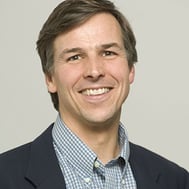Strategic thinking is always important; it’s a critical foundation skill for effective leaders. But in crucible leadership moments like the present, it has outsize importance.
When rapid change is happening all around us, even the immediate future is wildly uncertain and the potential range of outcomes is vast. This is when strategic thinking is most needed. This is also when it can be most challenging to do.
“In the middle of difficulty lies opportunity.”
― Albert Einstein
Each day that the current pandemic crisis extends and evolves, it becomes more apparent that this is not going to be limited to a short-term event. This does not relieve us as leaders from having to make critical short-term decisions—in some cases to survive—but we must simultaneously make decisions that will impact the mid- and longer-term. While we have far from perfect information about the longer horizon, the decisions we make now could be literally “make or break” decisions for the long term.
How can we manage this risk? We can look at the three most basic elements of strategic thinking, put them in the context of the current time, and ask ourselves a few key questions.
The three key cognitive processes of strategic thinking are Scan/Frame/Challenge:
-
When we scan, we gather information from a range of sources to gain insight and perspective and, ideally, make better decisions.
-
We frame when we organize and focus that scanned data on an issue, option or decision. Our brains are constantly putting data into frames based on context and experience. We cannot help it.
-
To challenge our own thinking is what comes least naturally. While our brains scan and frame naturally, to challenge requires conscious effort—or outside influence from people or events.
Strategic thinking is inherently an iterative process, but we tend to naturally think of the sequence as scan-frame-challenge. Whatever our thinking before now, in the wake of the pandemic we are experiencing a massive challenge to our assumptions. This is calling for us to rapidly re-Frame our thinking about the issues, options, and decisions at hand. In order to do this, we must, in turn, think carefully about the data we now scan and be conscious about how it informs the frames we create to make decisions.

So how can you put this to work? In the context of one of your present challenges, ask yourself these questions:
* SCAN *
-
What data are you looking at now? Do you need to consciously change your “feed”? Are you looking broadly enough? Consider the scanning tool below.
-
What connections or themes are you seeing? Is a new trend beginning to form? Do others see the same?

* FRAME *
-
What issues, decisions, and options need to now be revisited—or newly considered?
-
Can you be more conscious of the frame you are choosing—and make that thinking more visible to others?
-
Are you actively seeking to understand the frames of those around you?
* CHALLENGE *
-
How are your assumptions about the present and future impacting your frame?
-
Do you have multiple frames for multiple time horizons?
-
Have you created different planning scenarios for different frames?
-
What if something totally different happens?
The biggest trap in times of disruption may be in not challenging our thinking and assumptions in the face of rapidly evolving new realities. We may have to let go of long-held assumptions and beliefs as we emerge from COVID … or not. How we stay on top of this and make choices over the coming days and months will impact business for many of us more than any decisions we have made in our career. Being conscious about our thinking, our assumptions, and the choices we make will make us better leaders and help us create the best possible outcomes.
For more in the Crucible Communication series, explore:

Nick Noyes
Nick Noyes is a co-founder and partner of Insight Experience. He has more than 20 years of experience working with clients on education and strategic change initiatives. His work spans many activities, including the design of simulation-based educational programs, executive facilitation, coaching, and action learning initiatives. In addition to the leadership he provides for Insight Experience and its clients, Nick is responsible for the company’s strategy, business development, and marketing efforts.









